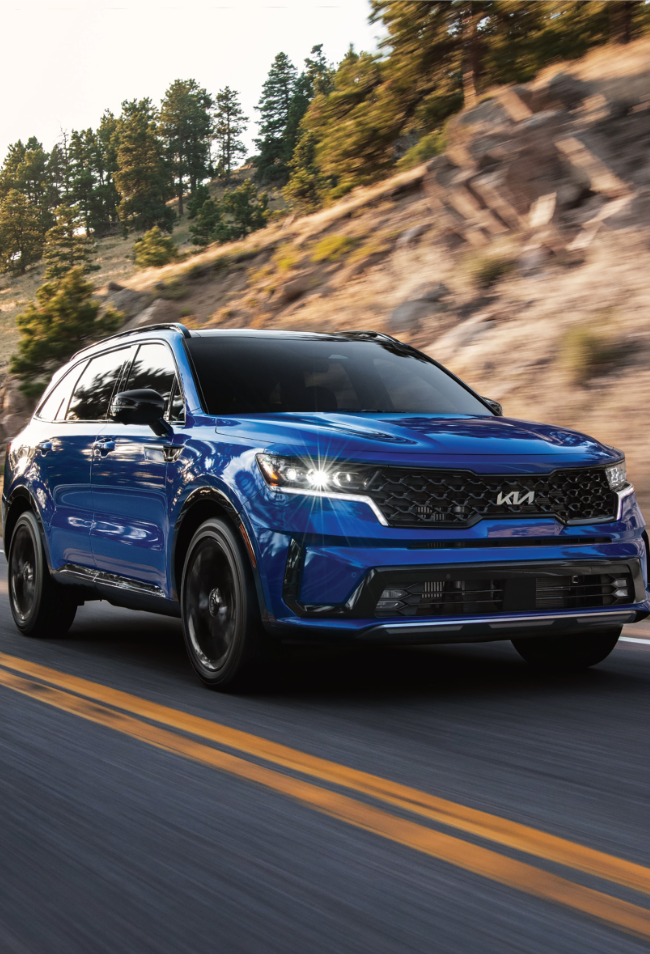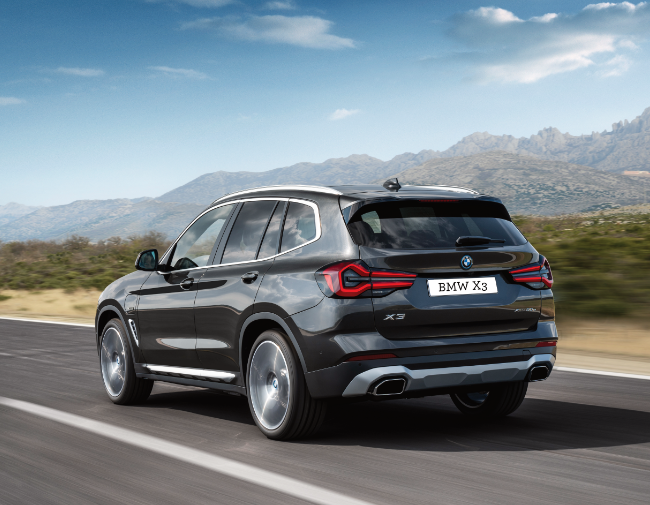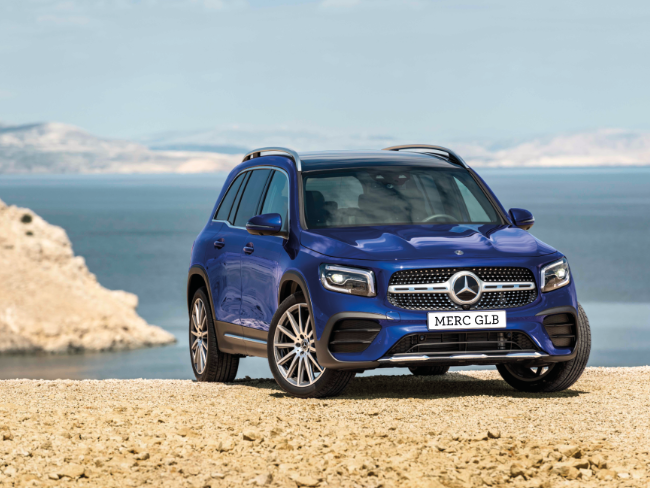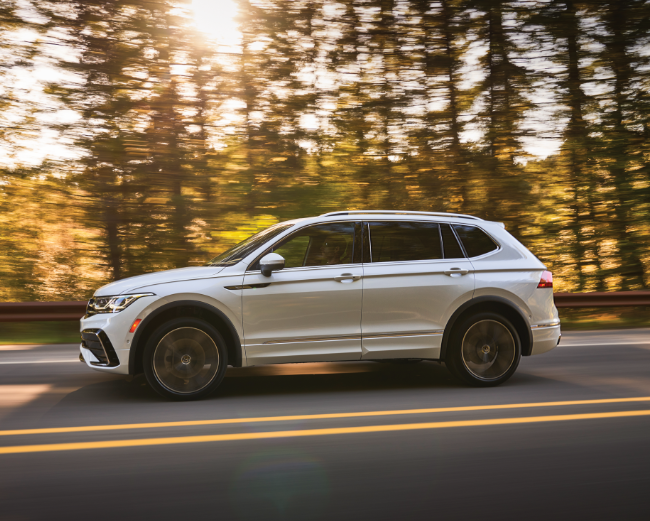Nostalgia might suggest it was lovely winding along Kruger’s Crocodile Circular in a burnt-orange 1970s Chevrolet 4100, but the reality was overheating, no air conditioning and gruesome fuel consumption. Happily, things have come a long way since then, thanks in no small part to the evolution of the executive family car, from station wagon to people carrier to luxury crossover SUV. There are a number of fine examples on the market today, all vying for the title of Best All-rounder. In the crosshairs are Kia’s Sorento, sister brand Hyundai’s Santa Fe, the Lexus NX, Land Rover’s Discovery Sport, BMW X3, Mercedes-Benz’s GLB 220d 4Matic, Peugeot’s 5008, Volkswagen’s Tiguan Allspace 4Motion and Volvo’s XC60 B5 AWD.
It’s sobering to think that just 10 years ago half the cars on this list would not have made the cut in terms of sophistication, appeal or luxury. It’s a measure of how far the wider industry has come – and the difficulty for sales managers – that the choice of luxury SUV crossovers today is so broad. Levels of engineering, safety and dynamism are remarkable – it’s an ideal time to buy an all-rounder.
Kia Sorento
First impressions matter, and Kia has done a fine job of imbuing its flagship with a visual sense of gravitas. It’s properly big but, unlike its slab-sized Carnival sister, hides its dimensions in a series of clever – and pretty – scallops and creases. Until you stand next to the Sorento you aren’t aware just how sizeable it actually is. Step inside, and the world is a premium place; top-drawer materials at all the touch points, fine attention to detail and a general sense of exclusivity prevail.
It’s hard to believe how far Kia has come in terms of quality in such a relatively short space of time. Press the starter button and there’s a far-off vibration but not much else. The 2.2-litre turbo diesel unit is as isolated as possible. Isolated and insulated; there’s precious little vibration as you select Drive from the central gear dial. Cruising at the legal limit offers much of the same – it’s fluid, regal, insulated from road irregularities, whisper quiet and responsive. The turbo-diesel is happy to hustle the double-tonner along when necessary. It also boasts a plethora of useful features, most notably that double-pane panoramic sunroof and superb Bose sound system.
Hyundai Santa Fe
Hyundai’s direct competitor to the Sorento is the Santa Fe, on the same platform, using the same engine. The difference between the two comes down to style and attitude. And perhaps more importantly, two seats – Hyundai makes do with five seats; the Kia slots two extra into the luggage area.
Style is important and Hyundai’s focus appears to be on a very contemporary, sexy attitude, big on the wow factor, heavy on presence. Kia’s aim is to be more sophisticated, less counterculture, good for the boardroom as well as the playroom.
Lexus NX
Equally sophisticated is Lexus’ new NX, which slots in between the UX and the RX. Few manufacturers have the SUV sector as covered as Lexus, catering to all tastes and demands. NX uses the company’s well-established 2.5-litre engine to ensure rapid and immediate progress, whatever the terrain, as well as a tried and tested 8-speed automatic gearbox.
It’s in the design that things get interesting; inside and out, NX stands apart from the crowd. If there’s an unwritten rule that SUV crossovers need to be staid, Lexus pointedly ignored it. From the vast spindle grille up front to the Star Wars interior, the design shouts fashion-forward – it’s no surprise the most recent NX was launched at the Design Indaba. It’s made for the daring and the confident; wall flowers need not apply.
Land Rover Discovery Sport
Land Rover’s qualifier in the game is its 7-seater Discovery Sport, and while it too trades on sophisticated good looks, Sport’s real point of difference is its off-road ability. Most SUV crossovers err on the side of caution when it comes to the dirt, but not Sport – DNA from any number of bushwhacking siblings means it can venture where many here fear to tread.
Key to its ability is its chassis and drivetrain, a complex electronic triumph of engineering can-do. The management system controls wheel-slip, traction, torque allowances, throttle response in low-traction situations and much more besides. Terrain Response 2 is standard, a comprehensive digital interface that lets drivers choose abilities without even getting out of the vehicle. Whether all this ability is necessary is debatable – it’s nice to have but rarely used and heavy to boot. The downside is less-than-good fuel figures from the otherwise quiet and refined 2.0-litre turbo diesel engine.
BMW X3
It’s said that an X3 sells itself, the go-to choice of every up-and-coming weekender. But stiff competition from inside the company (the new, large X1 is a real challenger) and without means it has had to up its game. This it has done by ramping up its design credentials.
BMW’s traditionally dull interior has had a major shakeup, with a sophisticated new curved infotainment screen, digital interface and striking new seat and body architectures. It adds up to a sense of renewal, vital for this hyper-critical, of-the-moment market.
Underneath the new kit it’s all BMW, which means a sorted chassis and excellent driving dynamics. BMW’s trademark ‘solid sportiness’ is there in abundance, offering a confident, entirely engaging drive. This is certainly still the choice of enthusiasts, out to enjoy the journey as much as the destination, even in base model 2-litre guise.
Peugeot 5008
The wild card in the SUV crossover team is Peugeot’s 5008, easily as sophisticated as any and all of its rivals here. The French firm is making a range of superbly competent cars at the moment, as beautiful as they are good to drive and live with.
The 5008 is usefully big inside (it boasts seven seats where its sister 3008 makes do with just five) and is exquisitely crafted, from the switch gear to the detailing on the seats and headlining. Indeed, its stand-out feature is its individuality, even as it ticks all the practicality boxes; Peugeot has made a car for the maverick that would just as easily suit the conformist, should he or she give it half a chance.
It’s pure class – in its effortless, silent acceleration, superb suspension, dynamic steering and long-road ability. Elegant as well as practical. It deserves to do far better.
Mercedes-Benz GLB 220d 4Matic
The announcement of the arrival of Mercedes-Benz’s GLB was met initially with great cheer – here was one of the company’s long-time stars, square, just the right size for the urban market, much-loved by pre-family couples exploring peri-urban playgrounds with all their kit. Yet the new model hasn’t done as well as was hoped, and that’s largely down to the fact that it is, frankly, not what it was.
Once a fully fledged SUV, it is now more of a station wagon, hampered on the dirt by low ride height, despite the all-wheel drive. That said, it makes all kinds of sense as a sizeable people carrier; it’s huge inside and easy to get into and out of. It’s also excellent as a tourer, with good road manners and a wafty, cosseting ride, especially in 4Matic guise. And Mercedes’ magnificently efficient diesel engine is a boon at the pumps – the 220d rates as one of SA’s most fuel-efficient cars of any size.
Volkswagen Tiguan Allspace 4Motion
VW Group’s good-looking people carrier is one of the best-value luxury crossovers and that’s reflected in the global sales figures, which put it at the top of its class. It’s also a satisfyingly dynamic car to drive, chassis and steering both entertaining in a way you wouldn’t expect from a large people carrier. There are downsides, however – the two-litre petrol engine battles when the car is fully laden and consequently it’s not as restful as the other two at speed. It’s also compromised off the tar, the low ride height no match for the country’s middelmannetjies.
Volvo XC60 B5 AWD
Volvo’s mid-sized SUV is the darling of the marque’s line-up, admired for its sophisticated interior and the general competence of its engineering. It also does extremely well on the rough stuff; the Volvo all-wheel drive system is one of the finest in the industry and importantly for SA, its ground clearance is good. Add comfort and a degree of driving dynamism (which wasn’t always the case with Volvo), and you start to understand why it has had so much success. Naturally it is also the safest car here, with whiplash protection, a side-impact protection system, roll stability control, dynamic stability and traction control, inflatable curtain airbags, hill descent collision warning and much-copied front, side and rear structures that are patented and a Volvo trademark. Spacious and solidly elegant, there’s much to recommend.













